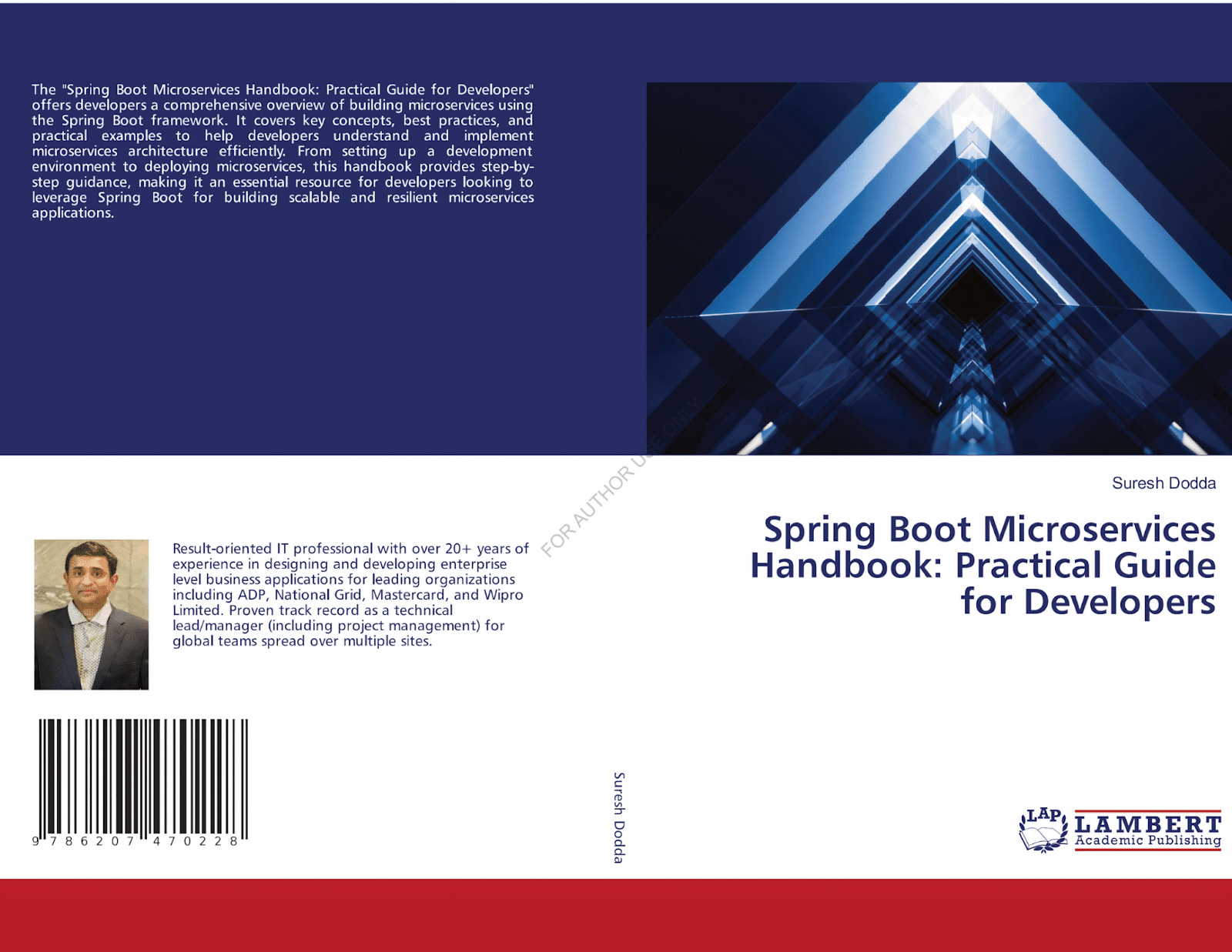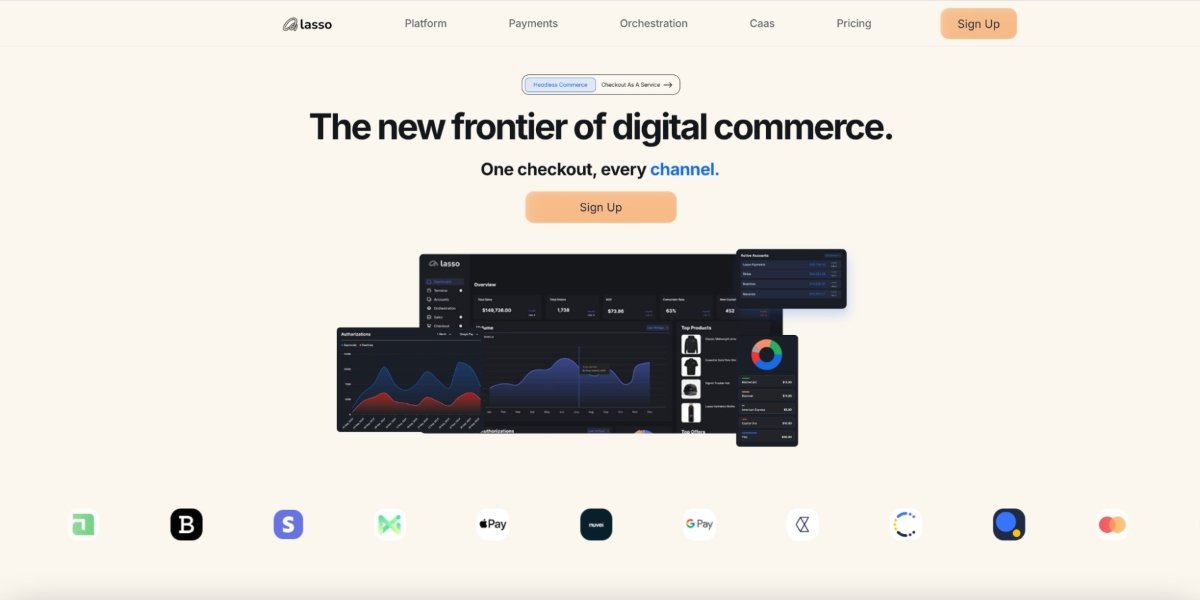By: Alex Mercer
Suresh Dodda has been working with Java for the past 20 years, gaining expert knowledge in Java and back-end development with microservices. He authored the book “Spring Boot Microservices Handbook: Practical Guide for Developers,” which has been published worldwide and is widely used by developers for practical implementation.
The book can be purchased on Amazon: https://www.amazon.com/Spring-Boot-Microservices-Handbook-Developers/dp/6207470222
Welcome to the “Spring Boot Microservices Handbook: Practical Guide for Developers.” This handbook is your comprehensive roadmap to mastering microservices development with Spring Boot. In today’s fast-paced software landscape, understanding microservices architecture is essential for building scalable and resilient applications.

Photo Courtesy: Suresh Dodda
With Spring Boot’s simplicity and robust features, developers can leverage its power to streamline the development process and build efficient microservices. Throughout this handbook, we’ll cover everything from the fundamentals of microservices architecture to advanced topics such as service discovery, fault tolerance, and distributed tracing.
Each chapter is designed to provide a blend of theoretical knowledge and practical insights, ensuring that you not only understand the concepts but also gain the skills to apply them confidently in real-world scenarios. Whether you’re looking to enhance your existing projects or embark on new ones, this guide will equip you with the tools and techniques needed to succeed in your microservices journey. So, whether you’re a seasoned developer looking to expand your skill set or a newcomer eager to dive into microservices development, this handbook has something for you. Let’s embark on this journey together and unlock the full potential of microservices with Spring Boot. Happy coding!
Brief about the book:
Introduction to Microservices Architecture: Microservices architecture is a design approach where a single application is composed of multiple loosely coupled, independently deployable services. Each service represents a specific business capability and can be developed, deployed, and scaled independently. This architecture promotes flexibility, scalability, and maintainability, allowing development teams to work on different services simultaneously without impacting others. Microservices architecture is often implemented using lightweight communication protocols like HTTP/REST or messaging queues, facilitating efficient interaction between services. This approach contrasts with monolithic architectures, where all components are tightly integrated into a single system.
Getting Started with Spring Boot: Getting started with Spring Boot involves setting up a Spring-based application with minimal configuration. Spring Boot simplifies the process of creating stand-alone, production-ready Spring applications by providing defaults for code and annotation configuration.
Designing Microservices with Spring Boot: Designing microservices with Spring Boot involves creating a series of small, independently deployable services, each focused on a specific business capability. Spring Boot provides a robust framework for building these microservices efficiently.
Building Microservices with Spring Boot: Building microservices with Spring Boot involves creating small, independent, and loosely coupled services that each focus on a specific business function
Service Discovery and Registration: Service discovery and registration are crucial components in a microservices architecture, enabling microservices to locate and communicate with each other dynamically. Spring Cloud Netflix Eureka is a popular tool for implementing service discovery and registration in Spring Boot applications.
Load Balancing and Fault Tolerance: In microservices architecture, load balancing and fault tolerance are essential to ensure reliability and scalability. Spring Cloud provides tools like Spring Cloud Netflix Ribbon, Resilience4j, and Spring Cloud Circuit Breaker to achieve these goals.
Event-Driven Communication: Event-driven communication in a microservices architecture allows services to communicate asynchronously by emitting and listening for events. This approach decouples services, leading to more scalable and resilient systems. Spring Boot and Spring Cloud provide robust support for event-driven communication using message brokers like RabbitMQ, Kafka, and others. Here’s a guide on how to set up event-driven communication in Spring Boot.
Containerization with Docker: Containerizing Spring Boot applications with Docker is a common practice to simplify deployment and ensure consistency across different environments. Docker allows you to package your application along with its dependencies into a single container image that can be easily deployed on any Docker-enabled platform.
Deploying Microservices with Kubernetes: Deploying microservices built with Spring Boot on Kubernetes provides scalability, resilience, and ease of management through container orchestration. Kubernetes simplifies deploying, scaling, and managing containerized applications.
Monitoring and Logging: Monitoring and logging are crucial aspects of managing and maintaining Spring Boot applications, especially in a microservices architecture
About Suresh Dodda

Photo Courtesy: Suresh Dodda
Suresh Dodda earned his Master’s in Computer Applications with distinction, achieving an A+ grade and a Roll of Honor from Vasavi College of Engineering. With a distinguished 24-year career in technology, he has expertise in Java, AWS, Microservices, statistical learning, and data mining. His work includes significant contributions to telecom billing, real-time credit scoring, and payment system integrations. Suresh Dodda is also an AWS-certified solution architect.
He holds UK Patents for innovations such as a Collision Avoidance System for Drones using Machine Learning, Data Processing Device, Data Visualization Computing Device for Machine Learning Analytics, CRM Computer integrating Artificial Intelligence for Smart Decisions, and a User-Friendly CRM Chatbot Interface for Customer Support.
His achievements include developing world-class products like the Dubai telecom billing system for Dubai Telecom, a real-time risk-scoring product for MasterCard, and Lifion by ADP. These products have achieved substantial financial success and are utilized by renowned clients globally.
A prolific author and speaker, Suresh has published extensively in prestigious journals such as IGI Global and IJIASE and serves as a journal reviewer for these and other renowned publications. His contributions in AI/ML and project management have been instrumental in delivering complex projects for global leaders, including Dubai Telecom, Nokia, Epson, Mastercard, and ADP, across sectors including banking, telecom, retail, and utilities.
Suresh Dodda is actively engaged in the academic and tech communities as an IEEE senior member, journal reviewer for IGI Global, and judge for IEEE conferences and technology innovation awards. His international experience and leadership in managing diverse teams have established him as a respected figure in technology and research.
Published by: Martin De Juan












